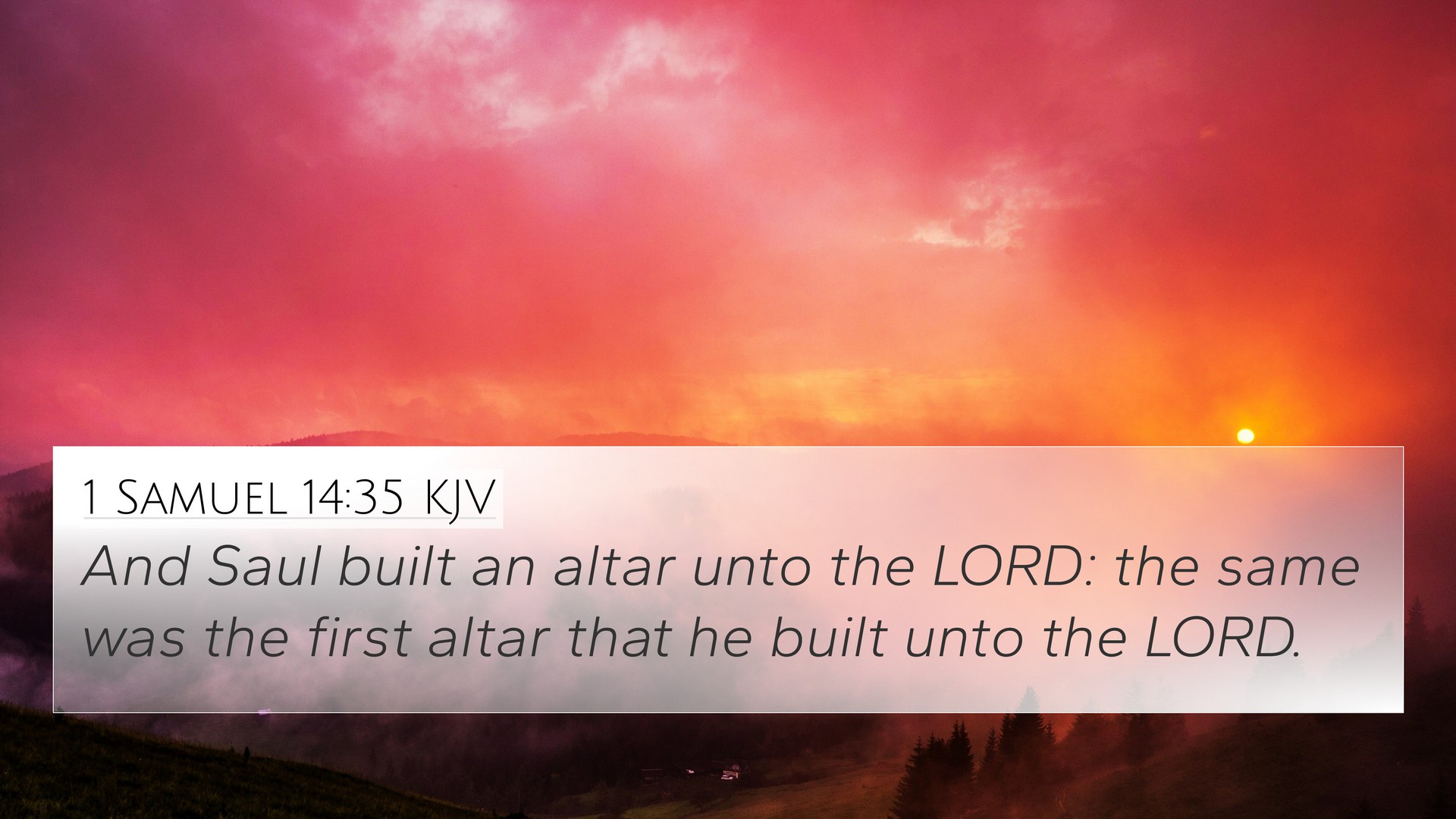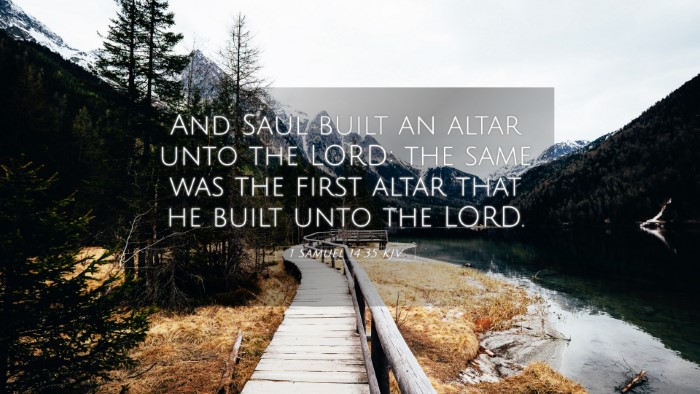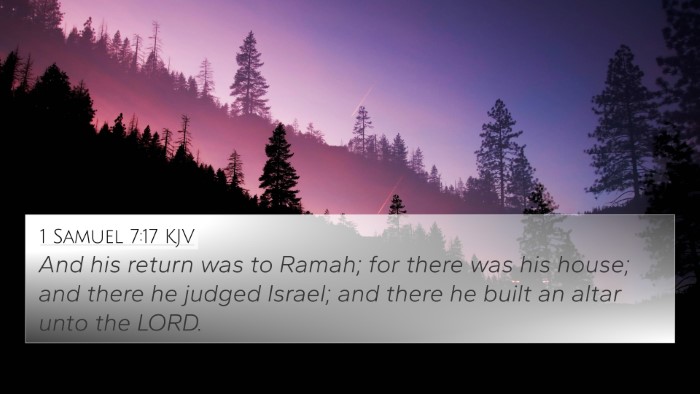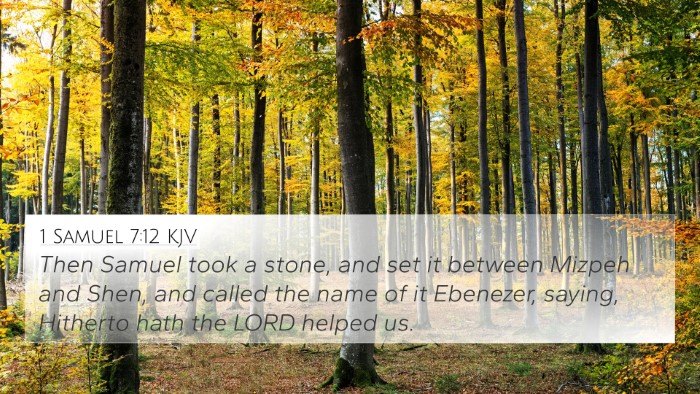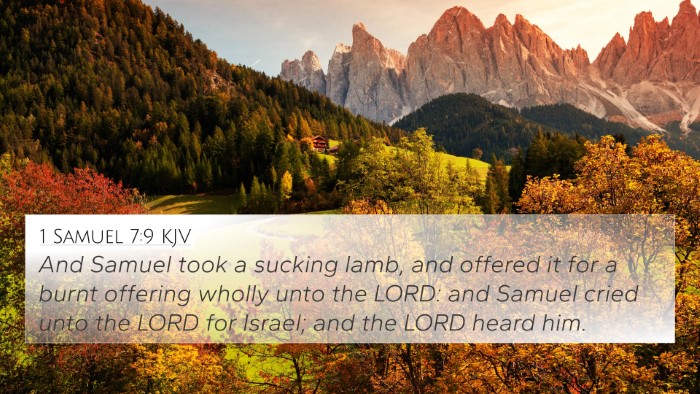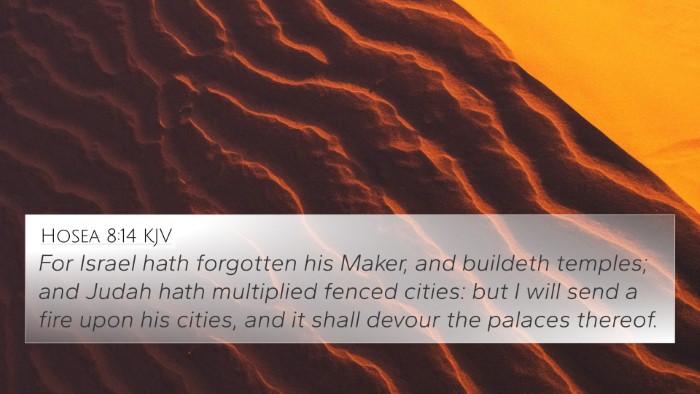Understanding 1 Samuel 14:35
1 Samuel 14:35 reads as follows: "And Saul built an altar unto the Lord: the same was the first altar that he built unto the Lord."
This verse marks a significant moment in the life of Saul, the first king of Israel. To comprehend its full meaning, we can delve into the interpretations provided by respected public domain commentators such as Matthew Henry, Albert Barnes, and Adam Clarke, while also exploring related Bible verses and themes.
Meaning and Context
Historical Context: This passage occurs during a tumultuous time in Israel's history. Saul had begun his reign, and the nation was facing multiple threats. Building an altar signals a crucial act of devotion to God amidst challenges.
Matthew Henry's Commentary: Henry emphasizes that Saul's act of building the altar is noteworthy as it represents an acknowledgment of God's sovereignty. It is the first altar that Saul had made, signifying his desire for divine guidance and favor. This act can be contrasted with later events in Saul's life where his fidelity to God became questionable.
Albert Barnes' Commentary: Barnes regards the altar as a central element in the Israelite worship system, indicating that Saul sought to align himself with the divine will. This altar is a representation of Saul's attempt to seek God’s approval, a move that paradoxically foreshadows the eventual decline of his kingship due to disobedience.
Adam Clarke's Commentary: Clarke notes that the construction of the altar served as a public declaration of faith. He highlights the implications of Saul’s actions, suggesting that the establishment of the altar demonstrates Saul's recognition of the Lord’s authority, which will be challenged in later narratives as Saul's decisions divert from divine commands.
Thematic Connections
Within the biblical narrative, the construction and meaning of altars often signify a profound relationship between humans and God, serving as a physical testament to worship, sacrifice, and devotion. Here are some thematic connections and cross-references:
- Genesis 12:7: Abram builds an altar at Shechem, establishing the theme of worship in sacred spaces.
- Exodus 20:24: Instructions on building altars to God emphasizing the necessity of worship and sacrifice.
- Leviticus 9:24: Fire consumed the offerings, indicating God's acceptance, mirroring the act of Saul’s altar building.
- 1 Samuel 7:9: Samuel offers a sacrifice at Mizpah, highlighting the importance of seeking God's favor in Israel’s deliverance.
- 1 Kings 3:15: Solomon’s encounter with God post-altar building, showcasing the spiritual significance of such actions in relational theology.
- Psalms 51:17: A broken spirit is presented as a pleasing sacrifice, encouraging personal dedication to God similar to the public act displayed by Saul.
- Hebrews 13:15: The New Testament perspective equates our praises as spiritual sacrifices, completing the cycle of worship initiated by acts such as Saul's.
- Luke 1:10: Represents the continuous theme of prayer offered up at altars, echoing Saul's desire for divine intervention.
- Romans 12:1: Urging believers to present their bodies as living sacrifices, connecting thematically to the altar's significance as a place of total commitment to God.
- Revelation 8:3: Coals from the altar are offered in prayer, symbolizing the lasting importance of the acts of worship initiated by figures like Saul.
Cross-Referencing Biblical Texts
Connecting various scriptures helps provide a richer understanding of this act of building an altar. When exploring 1 Samuel 14:35, it is valuable to employ tools for Bible cross-referencing to identify links and thematic parallels across the scriptures.
These connections may be explored through various methods, including:
- Cross-reference Bible study: This method allows readers to link related verses and extract deeper meaning.
- Bible concordance: An effective tool for locating verses that share similar themes or words, facilitating a broader study.
- Bible cross-reference guide: Provides systematic ways to trace connections between scriptures and themes.
- Bible reference resources: Comprehensive tools help contextualize each verse within the larger biblical narrative.
- Inter-Biblical dialogue: Examining how different texts echo one another’s themes and messages.
Conclusion
1 Samuel 14:35 signifies more than just a historical act; it encapsulates a pivotal moment of Saul's leadership as he recognizes the need for God at the forefront of his reign. This verse serves as a reminder of the importance of acknowledging divine guidance in our lives.
Through examining Saul’s actions and comparing them against other scriptures, we gain insights into the overarching theme of worship and the necessity of aligning ourselves with God’s will—a theme that resonates throughout Scripture and continues to be relevant today.
